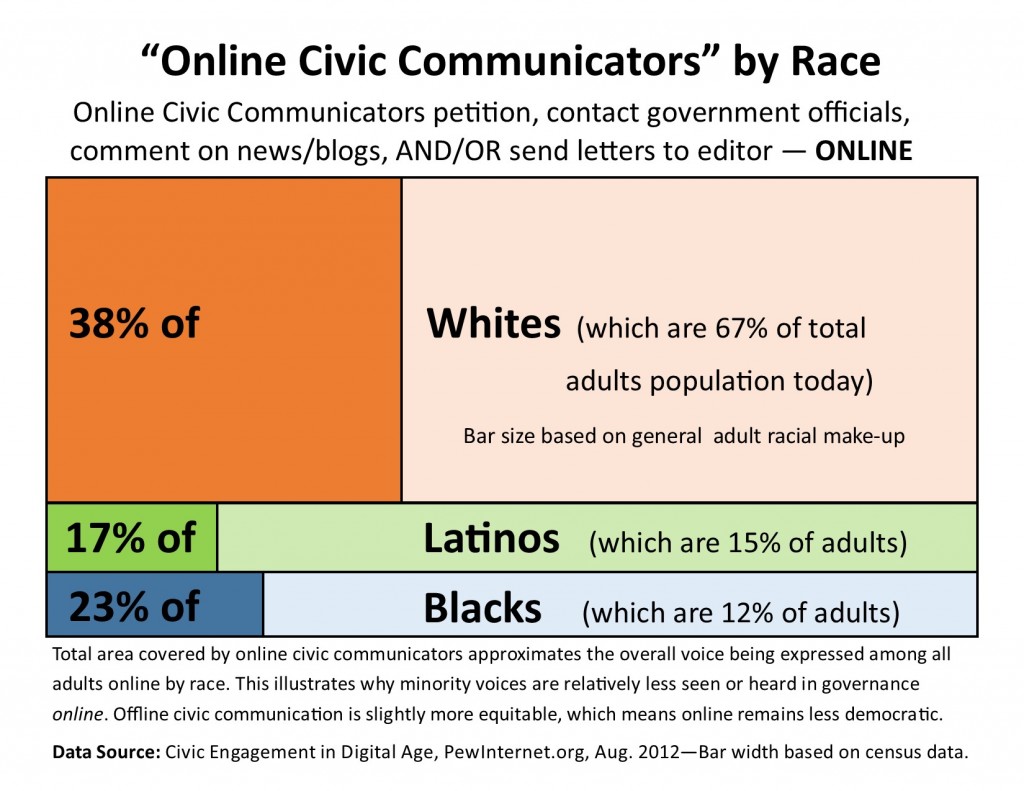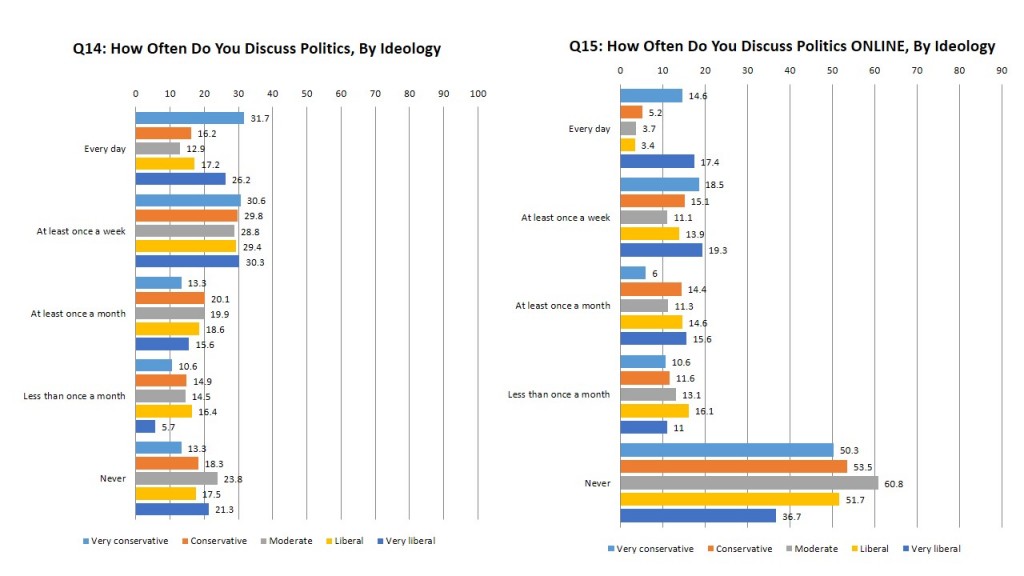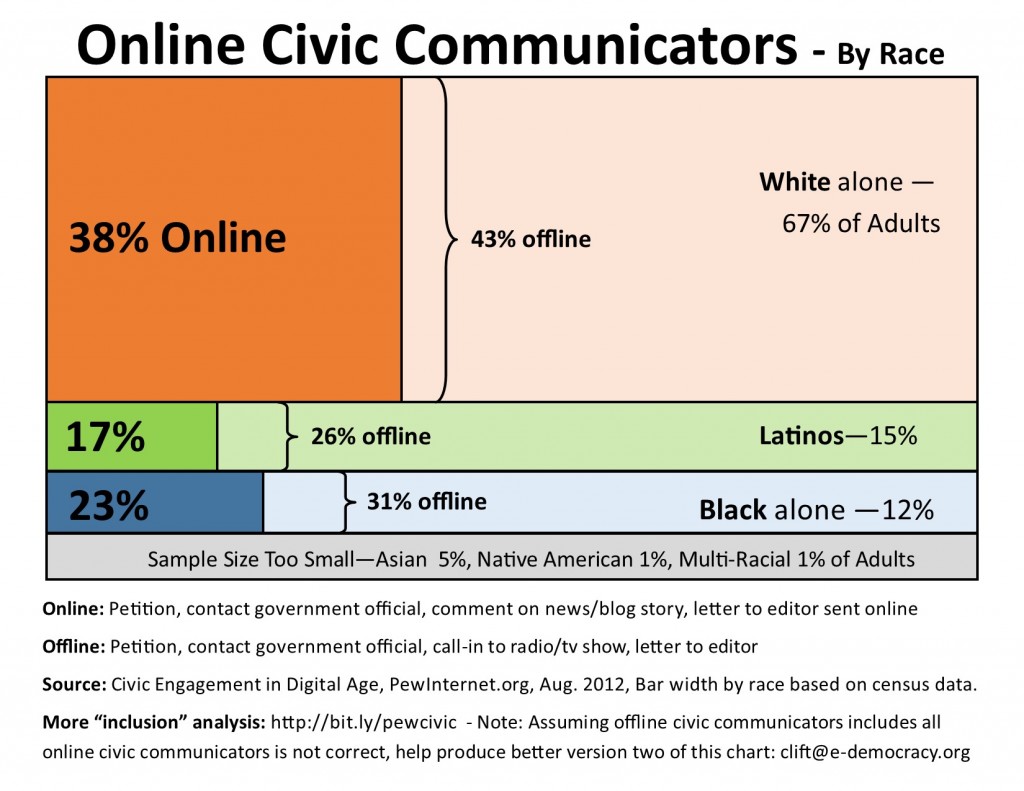 Recently, the New York Times shared a story on the millions of Americans who remain unplugged. Our view is that democratic divide is much wider than the digital divide, so therefore we must proactively use civic technology to help build stronger and more inclusive communities and democracies and not wait for everyone to be online.
Recently, the New York Times shared a story on the millions of Americans who remain unplugged. Our view is that democratic divide is much wider than the digital divide, so therefore we must proactively use civic technology to help build stronger and more inclusive communities and democracies and not wait for everyone to be online.
Over recent months, E-Democracy has hosted “New Voices” round table discussions on the Pew Internet and American Life Project’s report titled Civic Engagement in the Digital Era. Events at the Sunlight Foundation in Washington DCÂ and Code for America in San Francisco were sold out, so we’ve added a third “virtual book club” to the mix. It is tentatively scheduled for October 16. All attendees are expected to have reviewed the report and our inclusion summary.
The Chart Above
We need help from the broader research community to help us visualize this and other data to give us a better perspective on the opportunities and gaps related to increasing civic engagement online (and off). If we aren’t raising new voices and building connections across more representative voices, we are simply left with those who already show up. Empowering those with the greatest voice already online, takes us in the wrong direction. Granted with “more” input into government, in theory government might make better decisions and be more accountable to the public. However, the fact that online participation is apparently widening the democratic divide compared to offline participation is exactly the opposite of the goals of our field. (See more complicated version of the chart below.)
Can you hear me now? This leads into the next point – accountable to whom? Most likely those with the loudest collective voice. As they say, the squeaky wheel gets the grease. So, by displaying who is signing online petitions, emailing government, etc. with bar based on the width of the adult population surveyed you can get a rough sense of the collective voice being heard – by those in power, across the media, on social networks and across society as a whole.
While Pew no longer translates their percentages directly into statements like X million people do this, in our view, the chart above helps us “see” who is being heard online. It helps us prioritize the targeting of our inclusive community engagement work to bring out new and less represented voices. While 67% of adults are non-hispanic whites (2011), that is dramatically changing as just over half of the babies born now in the U.S. are people of color. Communities and nations that do not hear from their more diverse futures today are not the democracies they need to be.
My open question is – what solutions do you have to raise new voices online? How are you or how can we make online political and civic participation far more representative?
Echoing extremes? Another chart I want to share is one produced from the Pew data by Dr. Genie Stowers at San Francisco State University on discussing politics (the entry level form of civic engagement).
  While I don’t have pro-rated bar width here, the chart suggests those who are the most liberal and most conservative are far more likely to discuss politics online DAILY or WEEKLY and therefore be seen by their friends and others via online news sites. (According the survey, 33% identified as moderates, 28% conservative or 7% very conservative and 17% liberal or 6% very liberal – 9% don’t know/refused). More moderate folks are even less relatively heard online than offline as well. Is it no wonder, most online discussion spaces on major media websites seem like an ideological war zone with almost no civility? It is notable how many people never talk politics online topped by moderates at 61% and overall how many do talk politics offline.
 While I don’t have pro-rated bar width here, the chart suggests those who are the most liberal and most conservative are far more likely to discuss politics online DAILY or WEEKLY and therefore be seen by their friends and others via online news sites. (According the survey, 33% identified as moderates, 28% conservative or 7% very conservative and 17% liberal or 6% very liberal – 9% don’t know/refused). More moderate folks are even less relatively heard online than offline as well. Is it no wonder, most online discussion spaces on major media websites seem like an ideological war zone with almost no civility? It is notable how many people never talk politics online topped by moderates at 61% and overall how many do talk politics offline.
Add it up
If you add up the two charts in this blog, it is pretty obvious that to raise new and more representative voices online, you need to reach out to people of color and to people in the political center to make up the most ground. As a non-partisan, non-profit online civic engagement project, we have a special responsibility to make up for .com and .org advocacy efforts whose bottom line is either to reach the most advertiser sought out people or to reach those most willing to speak out for their cause.
One of our goals moving forward is to convene people across the civic tech/open government movement and connect them with those active with digital inclusion, civil rights, and civic engagement/deliberative democracy. You can get involved by signing up for our virtual book club on the Pew report, by joining the Digital Inclusion Network (or other online communities we host), or by offering to help visualize and gather more data/research that will help the civic tech field more effective focus our scarce resources in a way that increases our democratic impact.
P.S. A more complicated version of the top chart: 